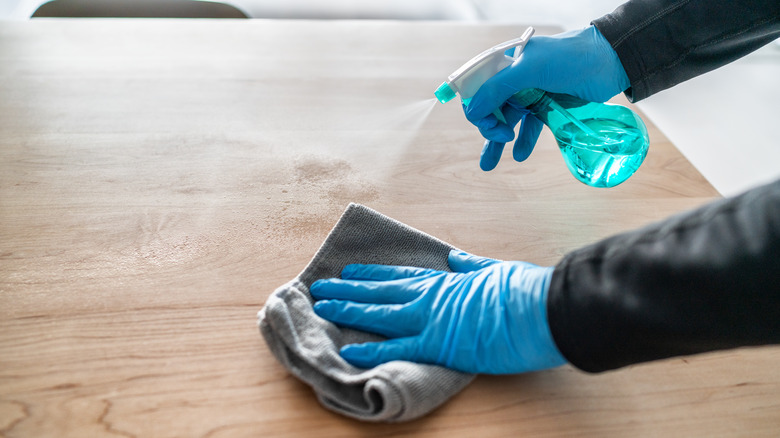How Vinegar And Olive Oil Could Help Remove Scratches From Wood
Do you have an unsightly scratch on your otherwise pristine wood floors? Or did your favorite piece of wood furniture get banged up during a recent move? You don't need to pay for costly repairs or go to the home improvement store to buy pricey, chemical-laden cleaners and wood treatments. Instead, you might have a solution right in your pantry. While vinegar has long been touted as an effective cleaning solution, others report that a mixture of vinegar and olive oil may be able to help clean and buff wood furniture and floors, to better hide any undesirable scratches.
According to House Logic, you should mix equal parts white vinegar and olive oil and pour the mixture onto the scratched portion of the wood. Let the mixture sit for a few hours and then come back and wipe it away. You can repeat this process as many times as you like, until the scratch is effectively camouflaged. If desired, you can fine-tune the recipe to meet your specific needs, such as adding more vinegar if the wood is extra-dirty, or adding more olive oil if you really want to condition and nourish the wood (via SF Gate).
Don't use the mixture under certain circumstances
However, as is the case with most DIY cleaning tricks, you want to be careful where you use your olive oil and vinegar mixture. If your wood floors or wooden furniture are waxed, applying vinegar repeatedly to those surfaces can wear down the finish, according to Real Simple.
Otherwise, even if you don't have any scratched up wood floors or furniture, you can find other ways to use vinegar and olive oil around your home. Hunker recommends mixing 1 cup each of vinegar and olive oil with 4 cups of warm water to clean wood paneling. Tampa Steel recommends using vinegar to clean your stainless steel kitchen appliances and then following with a coat of olive oil to shine the appliance.
Just remember — whenever cleaning wooden floors (or any large space) with a new solution, like this vinegar and olive oil mixture, it's always a good idea to spot-treat an out-of-the-way area first, just in case. If not, you could end up with a wooden floor that's way more unattractive than the scratches and dings that you started with.

